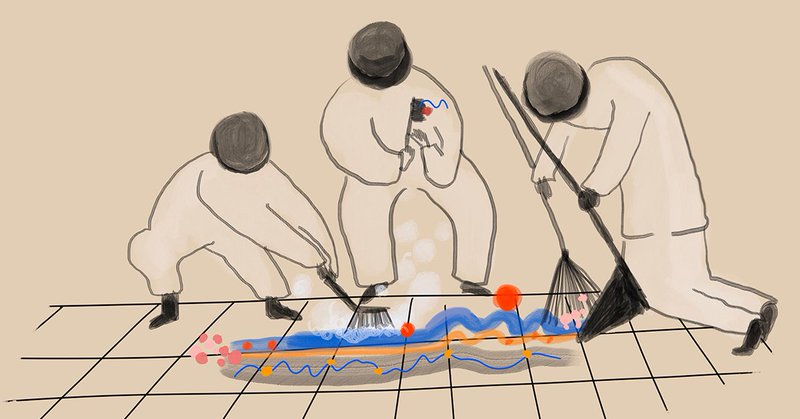
CBMM
@MIT_CBMM
Followers
3K
Following
33
Media
232
Statuses
267
The Center for Brains, Minds and Machines is a multi-institutional NSF Center dedicated to the study of the science and engineering of intelligence.
Cambridge, MA
Joined January 2017
[video] "A Theory of Appropriateness with Applications to Generative Artificial Intelligence" Joel Leibo, senior staff research scientist at Google DeepMind and professor at King's College London https://t.co/wPvJKBj0do
1
3
12
[video] Aligning deep networks with human vision will require novel neural architectures, data diets and training algorithms Thomas Serre, Brown University https://t.co/8k28KWMUsl
0
7
23
[video] "The success of CBMM and the people who made it possible" Over the last 11+ years, the CBMM has become a place of gathering brilliant minds to discuss and solve the challenges and questions of intelligence, organic and artificial. https://t.co/KHZW3etOJ4
1
0
4
[video] "Conveying Tasks to Computers: How Machine Learning Can Help" Michael Littman, Brown University https://t.co/Hy1JDbmS3r
0
0
4
[announcement] In collaboration with colleagues from DeepMind, MIT, UC Berkeley, and UCL, the Cooperative AI Foundation is excited to present the Concordia Contest as part of NeurIPS 2024. https://t.co/dfq9Ix4g3T
1
0
6
Exciting news from Oslo! @Nancy_Kanwisher has received the @KavliPrize in Neuroscience at a royal ceremony in Norway with her fellow laureates @doristsao + Winrich Freiwald. Family and friends were present for the festivities - cheers to all! 🥂
0
12
118
[news] A README for open neuroscience - Making data (and code) useful for yourself automatically makes it useful for others. By Sameul Gershman, Harvard University https://t.co/q40HcYF9iW
thetransmitter.org
Making data (and code) useful for yourself automatically makes it useful for others.
0
3
13
Il programma del #FIE24 è ora disponibile! 👉 Scoprilo sul sito: https://t.co/LFHLqL9gN0 Vi aspettiamo a #Torino dal 30 maggio al 2 giugno 2024 - Chi possiede la #Conoscenza - @editorilaterza @CollegioCA #TOLC @Tboeri
2
18
35
#MITTeachMeSomething When was anesthesia first used? Francisco J. Flores, PhD Instructor in Anaesthesia - @MassGenBrigham & @harvardmed, Researcher - @MIT_Picower, @MIT_CBMM Want to learn more? https://t.co/efYIsAPr4s
#MIT #neuroscience #surgery #anesthesiology
0
3
10
#MITTeachMeSomething How many layers does the cerebral cortex have? Diego Mendoza-Halliday, Research Scientist, McGovern Institute for Brain Research, MIT Want to learn more? https://t.co/7F1MYL552f
#MIT #TeachMeSomething #neuroscience #cortex #cerebralcortex #brain #layers
1
0
4
#MITTeachMeSomething How can we study signals from the human brain? @dimitrpantazis, Principal Research Scientist, MIT McGovern Center for Brain Research Want to learn more? https://t.co/10VwH6N1vZ
#MIT #neuroscience #MEG #Magnetoencephalography #magnets #brain #signals
0
1
7
#MITTeachMeSomething How can looking at a heart's electrical signals save lives? Taylor Baum, PhD Candidate, Electrical Engineering and Computer Science, MIT Want to learn more? https://t.co/KFT47acZgc
#MIT #neuroscience #surgery #heart #electricalsignals #arrhythmia #ablation
0
0
10
[video] "Statistical learning in human sensorimotor control" Daniel Wolpert, Columbia University Humans spend a lifetime learning, storing and refining a repertoire of motor memories appropriate for the multitude of tasks we perform... https://t.co/IimdEvUPva
0
5
21
[publication] "Perception of 3D shape integrates intuitive physics and analysis-by-synthesis" Research from @MITCoCoSci studying intuitive physics to explain how shape can be inferred from the deformations it causes to other objects, as in cloth draping. https://t.co/wSZJJeeVZL
0
4
19
[video] "Building and Training Deep Learning Models in PyTorch" BCS Computational Tutorial Series with Valmiki Kothare, MIT. In this tutorial, we will use deep learning on EEG and EMG mice data to predict sleep stages (Wakefulness, REM, Non-REM)... https://t.co/fGhzAc1jiw
0
4
16
[news] New technique helps robots pack objects into a tight space. Researchers coaxed a family of generative AI models to work together to solve multistep robot manipulation problems. From CBMM's Josh Tenenbaum, Leslie Kaelbling, et al. https://t.co/vH51ItJKcA
0
1
2
#MITTeachMeSomething How do we tell where a sound is coming from? Sagarika Alavilli, PhD Student, Speech & Hearing, Bioscience and Technology, Harvard University Want to learn more? https://t.co/tgJk1mlWcX
#MIT #neuroscience #AI #brain #audition #hearing #soundlocalization
0
0
1



